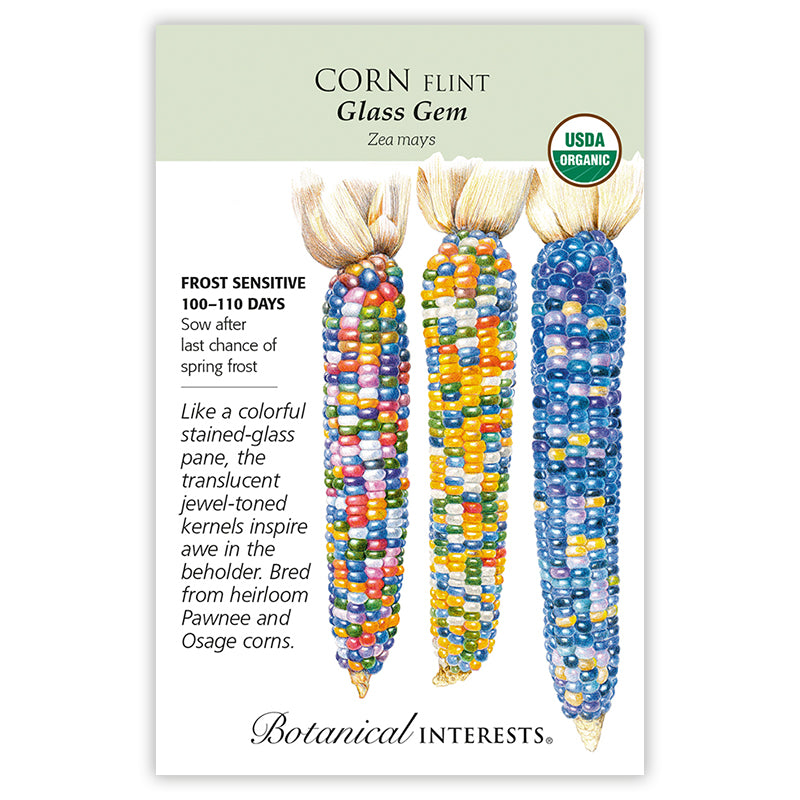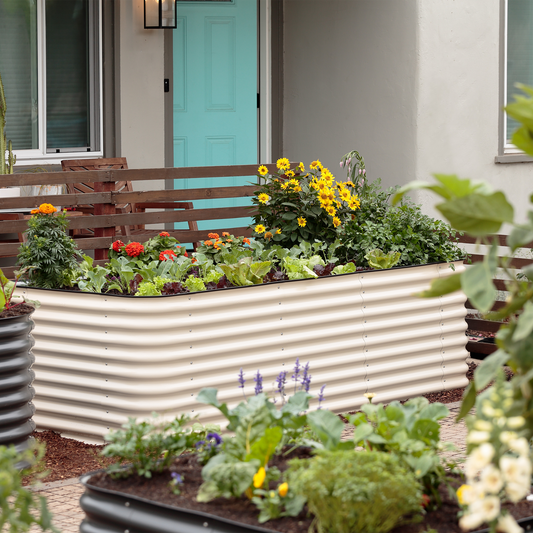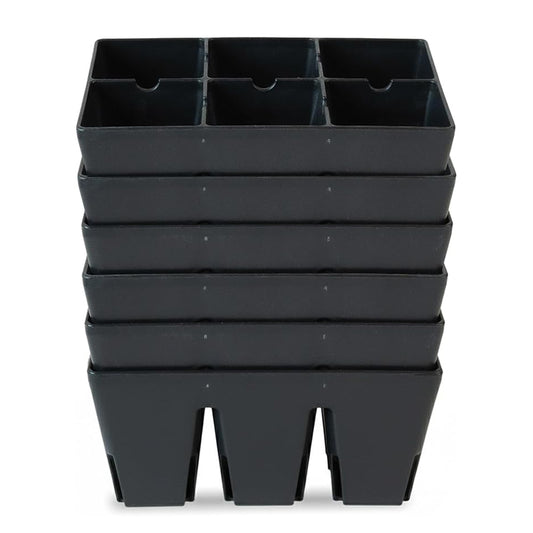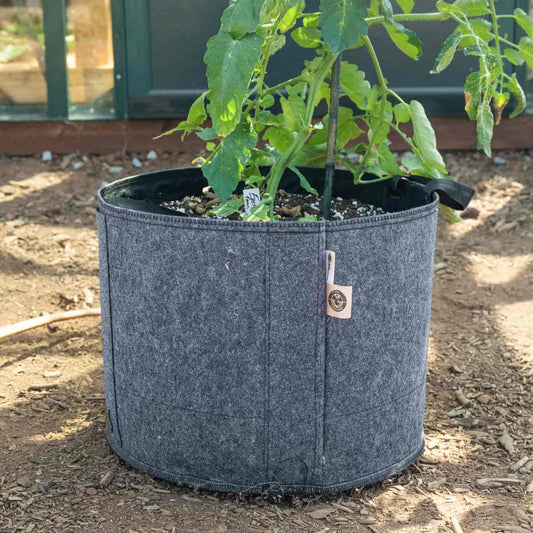


Your hardiness zone is
- Variety Info
- Sowing Info
- Growing Info
Variety Info
Days to Maturity: 100–110 days
Family: Poaceae
Type: Flint Corn (Learn More)
Native: Americas
Hardiness: Frost-sensitive annual
Exposure: Full sun
Plant Dimensions: 6'–10' tall
Variety Info: Ears are 3"–8" long, with colorful, opalescent kernels; 2–5 ears per stalk depending on conditions. Developed from crosses of heirloom Pawnee miniature popcorns with an Osage red flour corn, and another Osage corn called 'Greyhorse'.
Attributes: Frost Sensitive
Sowing Info
When to Sow Outside: RECOMMENDED. 1 to 2 weeks after your average last frost date, and when soil temperature is at least 60°F.
When to Start Inside: Not recommended.
Days to Emerge: 5–10 days
Seed Depth: 1"–1 ½"
Seed Spacing: A group of 2 seeds every 12"
Row Spacing: 24"–36"
Thinning: When 4" tall, thin to 1 every 12"
Growing Info
Harvesting: Let the ears dry on the stalks. The kernels are ready for harvest when they are hard and you can no longer leave a mark on them with your fingernail. Before the first fall frost, give each ear a twist until it breaks off. Peel back the husks, then hang the ears in a cool, dark, dry place for 4 to 6 weeks to cure. This is important to prevent mold and to dry to the optimal moisture percentage for popping. (In a perfect popcorn world, that would be 13½–14%.) After that, the cobs are ready for popping or storing. To strip off cured kernels, twist the cobs back and forth to loosen them (gloves are recommended).











